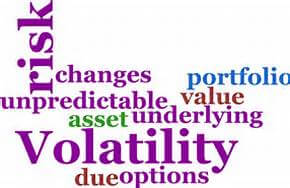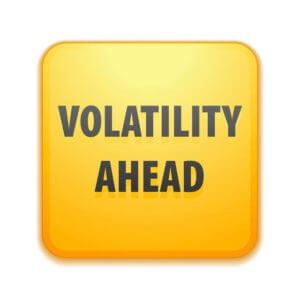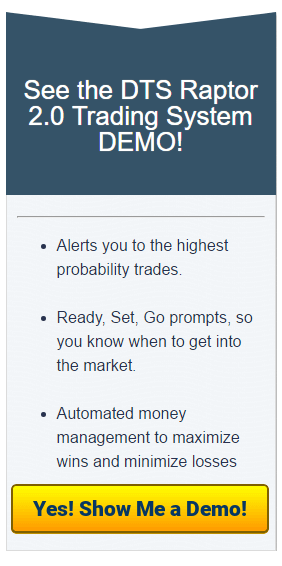Day Trading Tips and Tricks
Trading Options Using DTS – (Part 4)
Strategies Employed In Using Volatility to Your Advantage
The Iron Condor
An Iron Condor is a defined risk options trade, which as a strategy can be highly effective in taking advantage of period of high premium. Volatility is a major factor in deciding to use this strategy. As a general rule Iron Condors are employed when volatility is high. As volatility increases you can widen the strikes, which will improve your probability of profit. Selecting which strike prices to use is an important factor in successfully trading an Iron Condor. Since, Iron Condors are used when volatility is high, and the objective of the trade is to collect premium you would always be a “seller” of the Iron Condor.
Selling an Iron Condor is the simultaneous selling of a call spread and a put spread. When volatility is “rich” look to the strike prices that allow you to collect premium that adds up to at least one third of the width of the strike prices. For example on a five dollar wide spread the minimum credit to do the trade would be $1.67. On a ten dollar wide spread the credit would be $3.35.
The profit per trade is significantly higher when this strategy is used to execute only high Implied Volatility Iron Condors. This is the primary reason the selection process is narrowed to trading products that are in the “high” end of their Implied Volatility percentile range, (50% to 80% IV percentile).
Vertical Spreads
A vertical spread is also a defined risk trade. The vertical spread is an options strategy involving buying and selling of options of the same underlying security, same expiration date, but different strike prices. The spread can be created using all calls or all puts. This strategy is also a defined risk trade and can be employed during periods of high volatility or low volatility. When buying the spread it is considered a debit spread and when selling the spread a credit spread. Vertical spreads are also considered directional trades. During periods of high volatility you would look to execute a credit spread (using puts or calls determines direction) and conversely during periods of low volatility look to execute a debit spread.
The same “rule” applies for vertical spreads as in the iron condor in that when volatility is “rich” look to collect premium that add up to at least one third of the width of the strike prices. Based on this then, when volatility is high the probability of profit is higher when executing credit spreads. When volatility is low the probability of profit increases when executing debit spreads. The directional trade is determined by whether calls or puts are used. Buying a call debit spread would be used if volatility is low and the underlying is positioned to rally. Selling a call credit spread would be used if volatility is high and the underlying is expected to decline. Buying a put debit spread would be used if volatility is low and the underlying is expected to decline and conversely, selling a put credit spread would be used if volatility is high and the underlying is expected to rally.
Straddles and Strangles

A straddle is the purchase or sale of particular option derivatives that allows the trader to profit based on how much the price of the underlying security moves, regardless of the direction of price movement. As with the Iron Condor, straddles are used when volatility is high, and the objective of the trade is to collect premium so you would always be a “seller” of a straddle. A short straddle is considered a non-directional trading strategy that involves simultaneously selling a put and a call of the same underlying security, strike price and expiration date. A short straddle position has “unlimited risk” because the potential loss is unlimited due to the sale of the call and the put options which expose the trader to unlimited losses (on the call) or losses equal to the strike price (on the put), whereas profitability is limited to the premium gained by the initial sale of the straddle. Margin requirements will be higher since the risk of the underlying surging in either direction allows the potential losses to be “virtually” unlimited.
A strangle involves the purchase or sale of particular option derivatives that allows the holder to profit based on how much the price of the underlying security moves, with relatively minimal exposure to the direction of price movement. The short strangle involves selling both a call and a put option of the same underlying security. Like the short straddle, the options expire at the same time, but unlike a straddle, the options have different strike prices. Again, short strangles are best used when volatility is high, and the objective of the trade is to collect premium, thus you would always be a “seller” of a strangle. As with a short straddle, the short strangle is also considered to carry “unlimited risk”.
Managing Winners – High Volatility Strategies

An important lesson to learn is managing winning trades. Another lesson is selling premium when Implied Volatility percentiles are at least in the upper half of its current range (most often above 50%). Using high probability strategies when the Implied Volatility is in the upper half of the current range has a statistically higher profit potential. However, understanding when to the exit the trade to receive the largest profit rarely involves carrying the position to expiration.
Statistical studies reveal that executing strategies selling “premium” when the Implied Volatility percentile reaches 50% to 75% with approximately 45 days to expiration have the highest probability of being winning trades. When is the optimal time to trade out of the position? Is it better to exit the trade when the 25%, 50% profit level is reached or is it better to hold the trade to expiration?
The study was set up as follows using 5 years of price data to determine the number of trade occurrences of IV over 50% and again when IV was over 75%. Employing a strategy of executing one straddle (using strike prices one standard deviation from the current price of the underlying) and determining how often the trade was executable over the entire period. The maximum profit as measured by P/L was attained at the 25% max profit level, 95% of the time. The 50% max profit level at 90% of the time. Interesting in 80% of the trades held until expiration were loosing trades.
Similar studies can be set up for the strategies employed when IV is over 50% such as the Iron Condor or straddle. The results may differ slightly but over the length of the study it remains more profitable to exit the trades between the 25% to 50% max profit levels.
Next – Other Strategies and Managing Winners
P.S. I invite you to join us in our Trade Room. You can see professional day trading software in action. Click HERE to Register.





